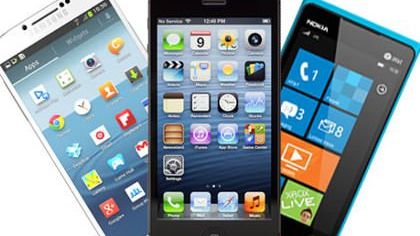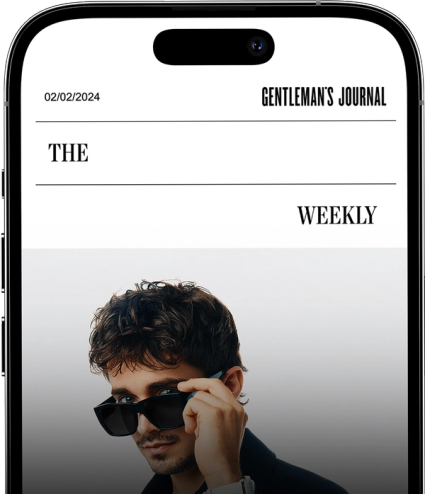

The Ultimate Smartphone Guide – Which is the Best Smartphone for You?
Words: Holly Macnaghten
If you’ve reached 2014 without having had a smartphone, you’ve been living under a some archaic rock. We’re not judging – far from it – but the truth remains, when it comes to the tech world, the smartphone is making huge strides and everyone is taking notice. With technology always reaching new heights and another new smartphone release constantly on the horizon, it can be difficult to know which one is the best choice to you. Here is our ultimate guide to buying a smart phone.
WHICH CARRIER?
The first thing to consider is the carrier you want to be with. Of course, you could already be tied down to a carrier with your previous contract, which can make changing more hassle than it is often worth. The big game players within the smartphone circle are Vodaphone, O2, 3, Orange, T-Mobile and EE. The Pay As You Go days are struggling thanks to the fairly recent surge of smartphones. When it comes down to it, considering all of the functions of a smart phone and the reason you would buy one in the first place, Pay As You Go just isn’t a viable option anymore. It will cost you ridiculous amounts to roam the internet and, to put it simply, smart phones weren’t designed to run on that kind of carrier.
WHICH PLATFORM?
The next choice to be made is the platform – this is pretty much limited to three options. The choices available to you are Apple iOS, Google’s Android, or Microsoft’s Windows Phone. This is where you begin to limit yourself, because if you go for Apple, not only are you stuck within the iPhone paradox that is very hard to escape from, but it means that you will slowly but surely morph into an Apple advocate. Macs, iPads and iPhones will pepper your house and it is unlikely that you’ll ever escape. Now that isn’t necessarily as scary as we’ve made it out to be – you definitely won’t be alone. iOS is generally considered the easiest to use, and has a decent battery life. Its performance is generally good and the bonus of living an Apple life is that the iOS apps are all designed in a similar manner so once you master one, you’ve mastered them all. The cameras are also of very good quality, which is obviously important as most people use their smart phone as their camera, too.
If you’re looking for something customisable, Android is for you. One of the largest benefits of going with Android is that it is developed by Google, meaning any Google based apps or services are the most compatible with Androids. Also, this software can be applied to thousands of different devices – from small three-inch devices to screens over six inches. It is a very lenient platform in comparison to the others. However, in general, Androids are less efficient than iOS – the phones tend to require larger batteries which still don’t have a very long life.
The Windows phone is the new born baby of the platforms, and as a result is often lagging behind iOS and Android. Most of the models that are compatible with the Windows software are Nokias, which means they are reliable and well built, but not the height of technology. Their displays are far larger than any of the others we’ve discussed, which comes with its advantages and disadvantages. It really depends on whether you will be using the phone alongside a computer, mac or tablet, or whether you want your phone to be able to do everything that you would do on all of these devices.
WHICH MODEL?
Now comes the time to decide on the model. If you have opted for iOS, you’re given the choice of the iPhone 5S, the iPhone 5C, the iPhone 5, or the iPhone 4S. While it does say a lot about the 4S that it is still available and compatible with the software two years after its release date, if you’re going to get an iPhone it’s worth going for one of the newer models. The most recent 5S has a fingerprint scanner, 64-bit processor and a new camera, while the 5C boasts a colourful back (personally we don’t really see the point, the 5C is exactly the same as the 5 but with a coloured plastic case). However, the 4-inch display on iPhones are fairly small in comparison to the other smart phones available, which is something to consider.
When it comes to Android, you have much more choice. The way to go about this choice largely depends on what you want from the display – some are more compact and can fit in your hand easily, whereas some are designed to lie in that awkward territory between a phone and a tablet. In between these two extremes is the Motorola Moto X, which has a 4.7 inch display. However, the bigger phones tend to be more successful. Within this market are the HTC One, LG G2, and the Samsung Galaxy Note 3. These phablets are very much marmite devices – the HTC One for example looks great but is made entirely of metal, which makes it extremely dense and heavy. Our general opinion is that these are just that bit too big – they’re bulky and awkward which is not what you want from a smart phone. They also don’t match up to Apple when it comes to the camera.
Your choices within the Windows platform span the Nokia Lumia range, with the most recent models being the Lumia 1020, Lumia 1320 and Lumia 1520. Often pegging them as the ‘business smartphone’, they seem more equipped to deal with documentation, schedules and general business activities than other smart phones – the modern blackberry, if you will. The cameras on these phones are also unrivalled, bringing out new technologies way ahead of their competitors, which is another bonus.
There are pros and cons to every smart phone, and they will probably save your life and cause you the most grief within the same day, no matter which one you choose. One thing’s for sure though, the smartphone train is one that you aren’t going to be able to avoid for much longer (if you’ve even managed to avoid it thus far).
By Gemma Baldwin – Twitter @gemma_baldwin


